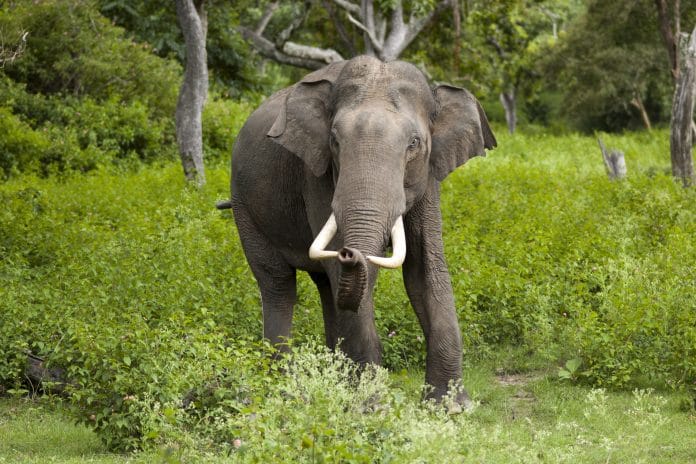Just last week, 7 elephants died of electrocution in Odisha. Experts deplore lack of research and data into changing behaviour of elephants.
New Delhi: Months after four elephants, including a calf, were mowed down by a train in Odisha, seven pachyderms died of electrocution last week in the Dhekanal district in the state — often referred to as the “graveyard for elephants”.
Electrocution remains one of the most common causes of elephant deaths in not just Odisha, but the entire country. In addition, encroachment, fragmentation of elephant corridors, illegal fencing, and train mishaps are also to be blamed for death of elephants in India.
According to Environment Ministry data, a total of 655 elephants were killed between 2009-10 and 2016-17 — taking the average pachyderm deaths to about seven every month and one every four days. Of these, 390 deaths occurred due to electrocution.
The latest incident in Odisha
According to reports, the incident happened when a herd of 13 elephants was passing through a village in Sadar Forest Range. Seven of them came in contact with a sagging wire and were electrocuted.
The incident has now resulted in a confrontation of sorts between Odisha’s Central Electricity Supply Utility (CESU) and the forest department, with the Principal Chief Conservator of Forests claiming that the deaths occurred “due to non-rectification of sagging lines and non-cabling of transmission lines” in the area.
Meanwhile, the Odisha government has ordered a Crime Branch inquiry into deaths of elephants.
Also read: How blind, bruised and depressed elephants were rescued from Corbett resorts
‘No acknowledgment of changing elephant behaviour’
There is absolutely no research or data available on changing elephant behaviour, and there is an obsession of sorts with romanticising the animal and its tendency to live within the boundaries of the forest, said animal rights lawyer Jayasimha Nuggehalli.
“We don’t have enough data on the changed patterns of walking, eating, etc. of elephants, and we keep talking about historic corridors…That is no solution,” said Nuggehalli.
Elephant corridors are strips of land connecting two large habitats, which are supposed to provide a safe corridor for elephants to migrate from one landscape to another. In India, there are 101 elephant corridors.
However, a study called the Rights of Passage, published by the Wildlife Trust of India (WTI), which was released in 2017, revealed the reasons behind the inefficiency of elephant corridors.
As many as two out of three elephant corridors across the country are affected by agricultural activities, the study said. While 58.4 per cent of the corridors fall under settled cultivation, 10.9 per cent fall under jhum (slash and burn) cultivation.
Elephants move out of their habitats in search of easy food that these agricultural settlements provide, said Nuggehalli. “Elephants, like any other animals, look for low effort-high calorie food, which is often provided by these paddy or sugarcane fields grown close to their habitats,” he said.
“Even though it means high risk, since it is so much easier for the elephants to get nutrition from a paddy field than the forest, they take that risk and go.”
In the case of the seven elephants which died Saturday, the herd was reportedly moving towards a canal road from a paddy field close-by.
Sumanth Madhav, who works with the Humane Society International, and has extensively worked on elephants, agreed. “Paddy and sugarcane are highly nutritious for the animals and the time they have to spend to get these as opposed to foraging in the forest is very less, so they opt for it.
“It is this change in the food preference of elephants, combined with the fact that there is invasion on their habitats, that is causing these deaths,” Madhav said.
Also read: Delhi zoo director ‘confirms’ animal deaths are being covered up, records fudged
Need for a holistic approach
Each time deaths of elephants occur, blame is passed from one department to the other. While the forest department typically blames the railway or electricity department for violating rules, the two, in turn, pass the buck to the forest department for not relaying real-time threats.
But amid the inevitable blame-game, there is little effort by the government to actually intervene in the problem, said experts.
“There needs to be a large-scale collection of data on elephants throughout the country to begin with, and then more importantly, there needs to be a massive programme to teach people how to live with elephants,” said Madhav.
Since elephant habitats are so fragmented now — with mines, rail lines and human settlements — it is only realistic to expect that humans and elephants learn to coexist, he argued. “There needs to be a change in agricultural patterns accordingly because elephants will opt for easier options.”
For example, paddy can be grown exclusively for elephants, with farmers being compensated by the government, said Nuggehalli.
What is happening right now in terms of fencing forest land etc. is bound to be an ineffective approach, he said. “You are fencing the animals within the forest, but they don’t know they are being fenced…So, they are bound to transgress the man-made boundaries and die.”






